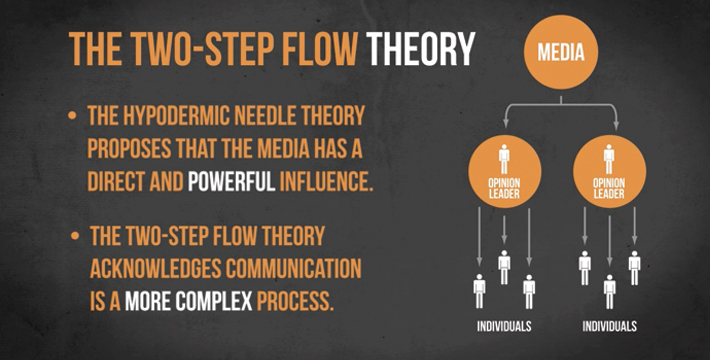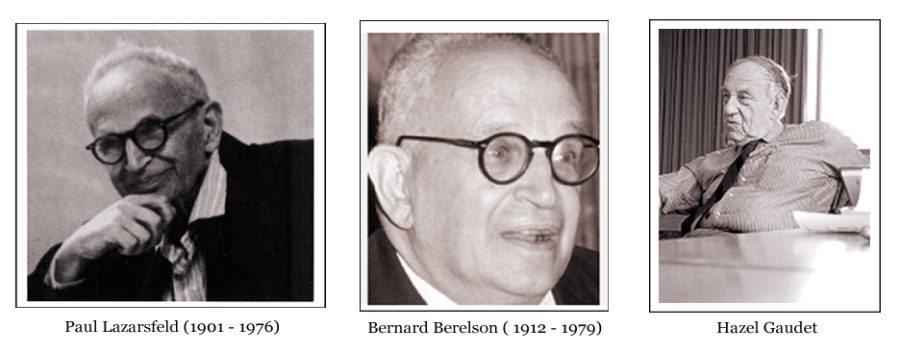In the dynamic landscape of communication theory, the Two-Step Flow Theory stands as a pivotal concept that has significantly influenced our understanding of how information spreads in society. Originally proposed by Paul Lazarsfeld, Bernard Berelson, and Hazel Gaudet in the 1940s [pictures of them shown above], this theory challenges the conventional notion that media directly shapes public opinion. Instead, it posits that opinion leaders, rather than media sources, play a crucial role in shaping the attitudes and behaviors of the wider audience.
Understanding the Two-Step Flow Theory
At its core, the Two-Step Flow Theory suggests that media impacts opinion leaders first, who then disseminate and interpret this information for their followers. These opinion leaders are individuals who are considered more knowledgeable, informed, and influential within a particular social network. They act as intermediaries between mass media and the general public, shaping the opinions and preferences of those who look up to them.

The Shift from One-Way to Two-Way Communication
In contrast to the traditional view of communication as a one-way process, where media directly influences individuals, the Two-Step Flow Theory introduces a more intricate, two-way model. It recognizes the active role of opinion leaders in mediating and interpreting information before it reaches the broader audience.
This theory gained prominence in the mid-20th century when mass media, such as newspapers and radio, were the primary sources of information. Today, in the age of social media, the Two-Step Flow Theory continues to be relevant, perhaps even more so. The rise of influencers on platforms like Instagram, YouTube, and TikTok exemplifies the ongoing significance of opinion leaders in shaping public opinion.
Influencers as Modern Opinion Leaders
In the digital era, influencers have become the contemporary equivalent of the traditional opinion leader. These individuals, often with a substantial following on social media, hold sway over their audience’s preferences, beliefs, and purchasing decisions. The Two-Step Flow Theory can be seamlessly applied to understand the dynamics of influence in this context.
When influencers engage with a brand or a product, their followers are more likely to be influenced than if the same information came directly from the brand. The personal connection, relatability, and perceived authenticity of influencers create a more profound impact on their audience. Essentially, influencers act as the modern interpreters and mediators between the flood of information available through mass media and the preferences of their followers.

Implications for Marketing and Communication Strategies
For marketers and communicators, the Two-Step Flow Theory presents a paradigm shift in how they approach reaching and engaging with their target audience. Rather than relying solely on mass media channels, understanding and strategically partnering with influencers can be a powerful way to leverage the two-step flow of communication.
Incorporating influencer marketing into a broader communication strategy involves identifying key opinion leaders within a niche, building authentic relationships with them, and then allowing them to naturally convey the brand message to their followers. This approach taps into the trust and credibility that influencers have already established with their audience, enhancing the effectiveness of the communication process.
As we navigate the complexities of communication in the digital age, the Two-Step Flow Theory remains a cornerstone concept that sheds light on the intricate web of influence. Whether in the mid-20th century or the present day, the role of opinion leaders in shaping public opinion persists. Embracing this understanding and adapting communication strategies to include influencers can unlock new dimensions of engagement, trust, and resonance in an increasingly interconnected world.
References:
Two-step flow model of communication | Mass Media, Opinion Leaders & Audience Impact | Britannica
Two Step Flow Theory of Communication | Definition and Analysis (media-studies.com)

